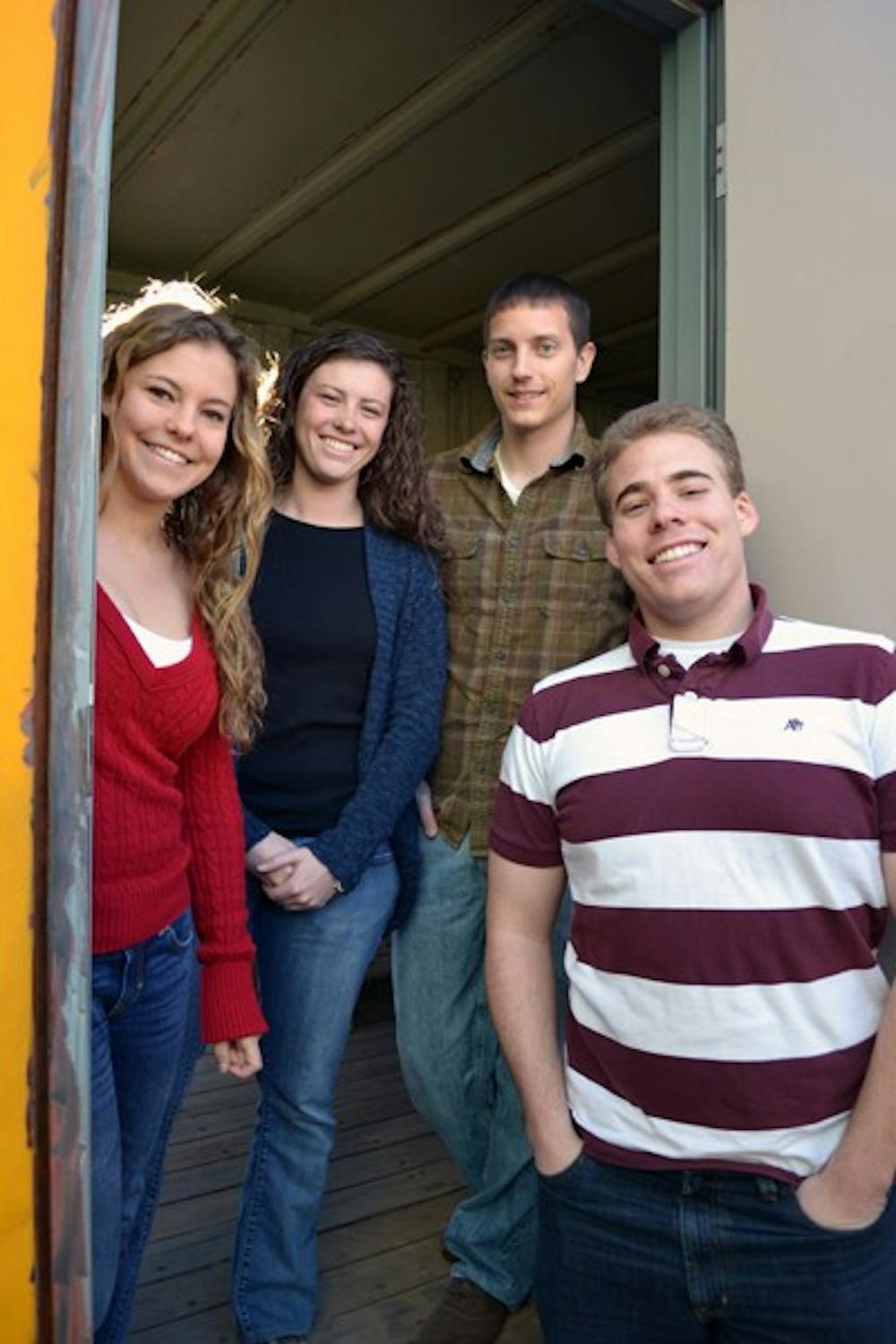In spring 2010, a group of ASU engineering students put together a business proposal in less than one week. A year and a half later, Entrepreneur magazinenamed them the College Entrepreneurs of the Year for their work with G3Box, a company that transforms discarded freight shipping containers into modern medical clinics for use in rural areas.
As part of the award, biomedical engineering junior Gabrielle Palermo, mechanical engineering senior Billy Walters and mechanical engineering graduate students Clay Tyler and Susanna Young all flew to a conference in California on Tuesday.
The $5,000 they received as part of the award will go toward continued development of a prototype of their product.
Palermo said the award brought new awareness to their company, which might be the best reward.
“People know who we are now,” she said. “It makes us sound serious.”
The idea behind G3Box came from Engineering Projects in Community Service (EPICS), a program that gives students an opportunity to use their engineering skills to solve real-world problems for nonprofit organizations. It came to ASU in fall 2009.
Ira A. Fulton Schools of Engineering outreach coordinator Jan Snyder mentored one of the EPICS teams and told them about his trips to Africa, where he saw discarded shipping containers littering docks.
Members of the team, including Young and Tyler, decided to solve this littering problem while also providing a safer place for mothers to give birth.
In Africa, about 1,500 mothers die every day during childbirth, according to the World Health Organization.
“We decided to fix both of these problems by turning the shipping containers into maternal clinics,” Young said.
Meanwhile, another team competing for the same prize had a similar project plan.
Palermo and Walters were part of Doc-in-a-Box, an EPICS team that wanted to transform the shipping containers into disaster response clinics.
In spring 2010 the members of the two groups met to discuss merging their similar concepts. By the time a proposal was due the following Sunday, G3Box was born.
Young, Tyler, Palermo and Walters applied for the magazine’sEntrepreneur of 2011 awards and for a grant from the Edson Student Entrepreneur Initiative, winning both.
The Edson initiative provides 10-15 student teams each year with office space, funding and coaching.
They plan to send a prototype of their first shipping-container clinic to Kenya in spring 2012.
“We’re really just trying to help with rural health care in America and abroad in Africa and India,” Walters said.
The team intends to make future clinics by knocking out container walls and combining two or three of them. The prototype clinic is composed of only one shipping container, as the company tests its effectiveness.
Most shipping containers, including the prototype clinic, are 40 feet long, 8 feet high and 8 feet wide.
The relatively narrow width would allow little room for medical personnel to move between beds, which, along with outfitting the containers with power, ventilation, lighting and running water, is one of G3Box’s largest challenges, Young said.
The team members all see the company as part of their post-university life.
All four founders have jobs on the side they will maintain, but they plan to keep working on G3Box as a team.
“Even though we’re all engineers, we each have a bit of diversity,” Young said. “This is the best team I’ve ever been on.”
Reach the reporter at julia.shumway@asu.edu or follow @JMShumway on Twitter.
Like The State Press on Facebook and follow @statepress on Twitter.
Correction: An earlier version of this story incorrectly listed the length of the shipping container. The story has been edited to reflect the correct height.




